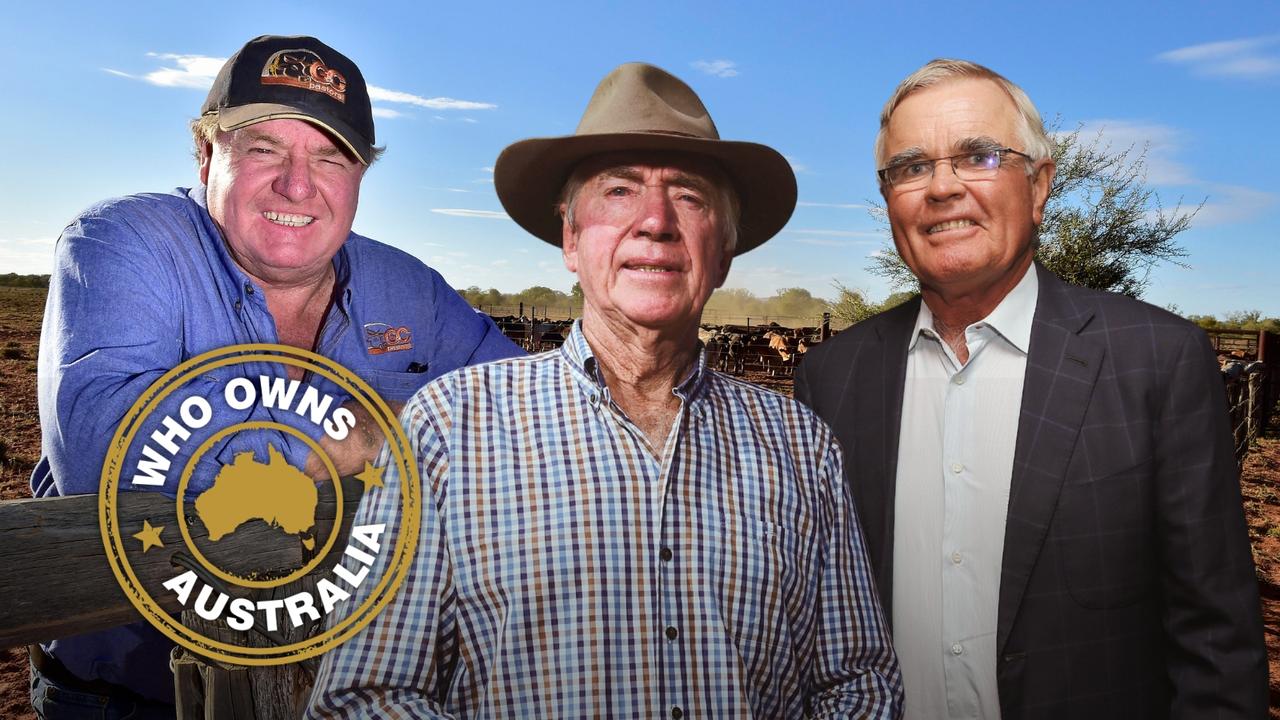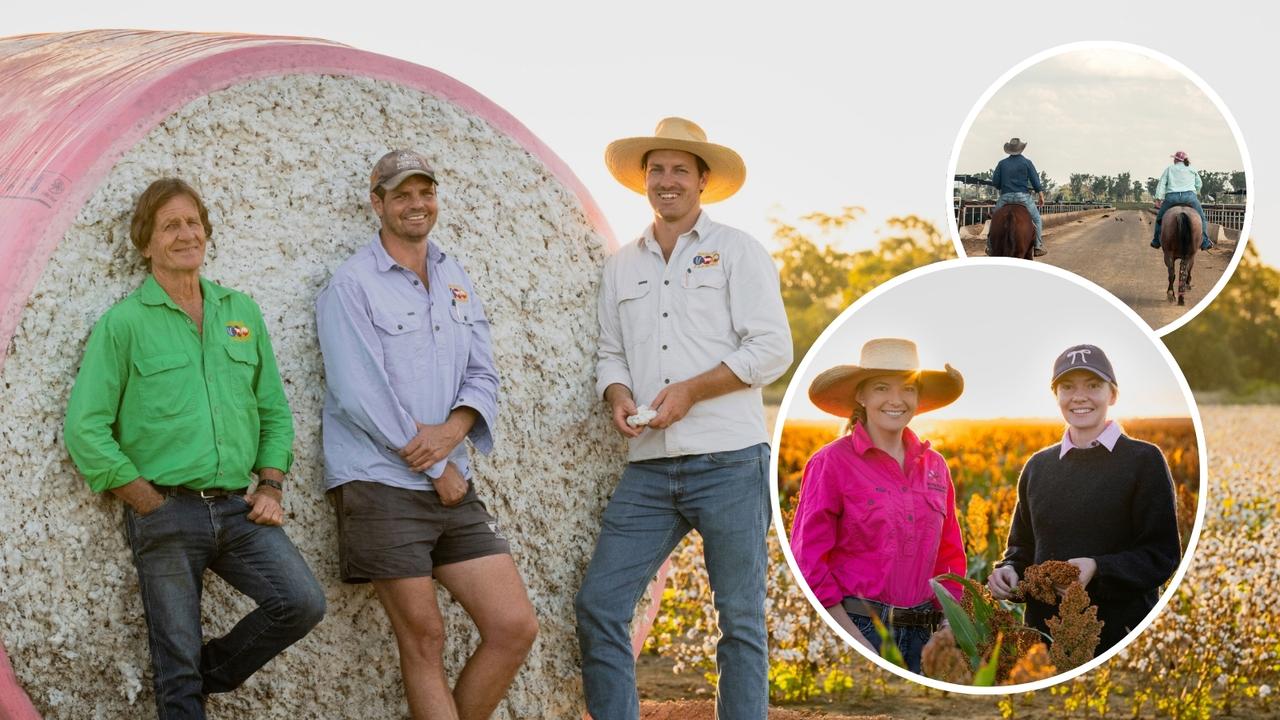Agriculture’s 20 hot issues for the 2020s
With a new decade just weeks away, we look at the issues that will dominate agriculture across the next 10 years.
WITH a new decade just weeks away, we look at the issues that will dominate agriculture across the next 10 years.
1. CLIMATE
THE climate is drying, with the Bureau of Meteorology warning the combination of warmer temperatures and reduced rainfall will slash run-off into water storages, exacerbating the battle to secure water for farmers, their towns and cities.

Farmers have always been at the front line of climate-change adaptation, proving they cannot
only maintain but boost productivity in the face of climatic extremes.
Australian farm productivity has been the envy of other sectors for decades, although cuts in research and development funding are starting to take their toll.
READ MORE: AGJOURNAL
MACQUARIE BANK’S FIELD MARSHAL TAKES CHARGE
PLANT-BASED PROTEINS PLAY ON GUILT, GM YEAST IS REAL REVOLUTION
Fifty years ago Australian farmers pioneered zero and minimum tillage cropping systems, increasing water retention, as well as cutting erosion and fuel consumption, long before climate change made headlines.
New crop varieties, genetically modified drought-tolerant pastures and the labour efficiency gained from ever bigger and ultimately automated machinery will continue to allow farmers to adapt.
But there’s one factor farmers struggle to control – competition for resources from Australia’s growing megacities – for land, water, government funding, plus dealing with the demands for cheap food from free-range animals, chemical-free crops and farms with a low carbon footprint.

2. WATER
THE United Nations has warned water wars will erupt across the Middle East and Africa this century, with four out of 10 people unable to access secure supplies.
But it’s in Australia, the driest continent on earth, where skirmishes have already erupted in a battle between rural and urban communities over our most precious resource.
The millennium drought culminated in irrigators battling to plug a pipeline that diverted water to Melbourne and desalination plants sprang up to supply major cities.
Now, as a second major drought bites, it’s not just irrigators, but towns that are running dry, due to state and federal governments’ failure to invest in pipelines to shift water to towns and farms.
Irrigation industry leader Richard Anderson says farmers will continue to become more efficient and opportunistic in their water use. “Irrigators will adapt, with technology, we’ll have new varieties, perhaps even see people moving to where there’s more water in northern Australia,” Anderson says.

3. CONNECTIVITY
CONNECTIVITY could make or break agriculture’s hoped-for digital revolution.
This year’s Australian Digital Inclusion Index report, which measures digital access, affordability and literacy, shows rural regions are 8 per cent less connected than urban centres.
National Farmers’ Federation telecommunications committee chair Peter Thompson expects this digital divide to be closed by 2030.
He says farmers are desperate for affordable network solutions, so they can tap in to the potential of connected agtech.
“There have been a lot of people who have been researching the network solutions, the water monitoring sensors, the remote sensing of pastures,” says the Queensland cattle and crop farmer.
“They are actually very well educated about it all, but just haven’t made the step because they don’t know anyone else who has done it. I see that is going to happen really rapidly … by 2030, it will just be something you do.”
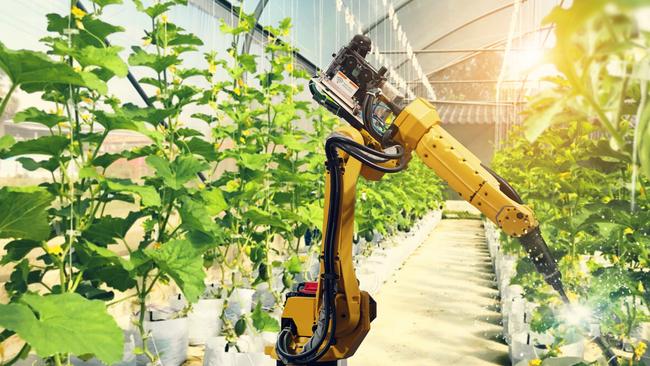
4. AUTOMATION
EXPERTS predict on-farm tech and automation will be common by 2030 and will deliver an extra $20.3 billion in annual farmgate production.
We are approaching a decade where it will become commonplace for robots to spray weeds, water crops on demand and harvest produce at the right time, while on-farm sensors guide them. SwarmFarm Robotics founder Andrew Bate says there is rapid development in the sector, driven by a need to improve production systems, decrease chemical use and soil compaction, fight herbicide resistance and increase yields.
“In two years’ time most farmers will have seen a robot running in their region. In five years’ time, robots will be quite common on farms in Australia,” Bate says.
Queensland avocado grower Matt Fealy believes automation will also create new jobs.
“In 2030, I absolutely expect autonomous mowing, slashing, weed spraying and pesticide-spraying vehicles … and we will be seeing the beginnings of autonomous harvesting,” Fealy says. “I think it has enormous potential to add economic growth and jobs growth in struggling rural areas.”

5. ACTIVISM
THE past year has seen a significant rise in animal activism, through actions such as street protests and farm invasions. And it will likely remain a major issue into the next decade.
Prominent activists have made it clear they have no intention of stopping their controversial activities, even with the introduction of new laws and harsher penalties.
Social scientist Lauren Rosewarne says activism is here to stay, because of the rise of veganism. “I believe the rise in veganism is strongly motivated by concerns about the welfare of animals. For those concerned about contemporary commercial farming practices, protests will likely remain an activist strategy,” Rosewarne says.

6. FARM SAFETY
NEW technologies are expected to make a meaningful difference to farm safety over the next decade. In 2017, 52 people died while working in agriculture, forestry and fishing.
And according to Safe Work Australia, agriculture workers account for more than one in five workers who die at work.
Farmsafe Australia says while “change will inevitably come slowly”, education, emerging technologies and new regulations – such as mandatory rollbars on quad bikes – will have a positive effect.
“Before long, we will begin to see the rollout of things like autonomous tractors and harvesting equipment which even further reduces the risk inherent to conventional farming practices,” says Farmsafe’s Thomas Cullen.
He expects rollbars on quad bikes will have a similar affect as when rollover protection became mandatory on tractors in the 1980s. “Since then, we have witnessed a 70 per cent reduction in the number of people killed in tractor rollovers.”
READ MORE: AGJOURNAL
JIGSAW FARMS HITS CARBON-NEUTRAL GOALS
FARMERS FLOCK TO PADDOCK-TESTED AGTECH

7. AUSTRALIAN DAIRY
WILL the Australian dairy industry turn around in the next decade, after 20 years of declining production?
“I’m not sure it will,” says Tallygaroopna dairy farmer, and former Dairy Australia chair, Geoff Akers. “I think there’s a lack of confidence to invest, given if you’re looking at $2 million to expand or build a new dairy, which will take 10 years to pay off.
“It seems a step too far for mums and dads.”
Even buoyant farmgate prices of $7 a kilogram of milk solids have failed to lift production this season, which has already fallen 6 per cent. Dairy farmers are struggling to rebuild equity and confidence after milk-price clawbacks, skyrocketing water prices and increasing competition for land.
But it’s competition from left field that may pose a far greater risk to not only Australian, but global dairying. This is genetically-modified yeast capable of producing casein and whey proteins on a massive scale, for use in everything from chocolate and ice cream to noodles, infant formula, cosmetics and even plastics.

8. CHINA
GLOBAL political tensions and a slowing economy loom as potential billion-dollar maybes for China – Australia’s biggest agricultural export market – as we enter the 2020s.
China imported $11.8 billion of Australian agriculture goods in 2017-18, making it our No. 1 market for farmers, dwarfing the next three biggest export nations Japan ($4.9 billion), the US ($3.9 billion) and Korea ($2.9 billion).
China accounts for about 25 per cent of Australia’s total ag exports, with the three biggest commodities being wool (worth $3.3 billion), barley ($1.5 billion) and beef ($1 billion).
But a predicted decline in Chinese gross domestic product growth from 6.6 per cent last year to 5.4 per cent in 2024 has economists wary. Experts attribute the predicted slowdown to China’s transition from an export and heavy industry-reliant economy to one driven more by consumption and services.
The impact of African swine fever is expected to be felt for years, according to Rabobank analyst Angus Gidley-Baird, leading to increased meat prices and sheep slaughter in China. This could have a positive impact for the Australian wool industry. The Chinese sheep flock dipped to 161 million head last year and national wool production dropped to 356,608 tonnes, the lowest level in 10 years.
“Any further contraction may result in stronger Chinese import demand (of wool) in the future,” he says.
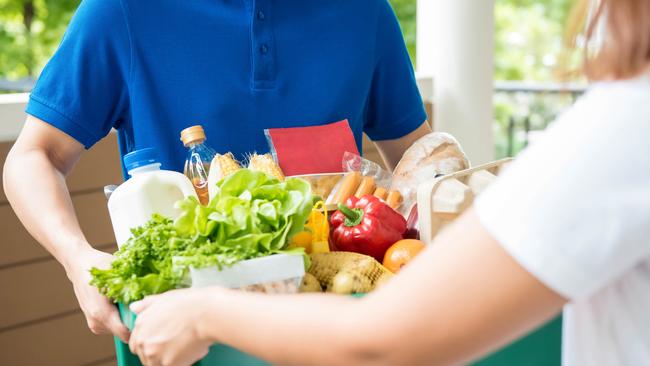
9. DIRECT FOOD
FOOD direct to the customer is going to boom over the next 10 years and it’s hard to fathom the different ways we will be receiving our food.
Consumers love to order all types of food online – meal kits from Hello Fresh, groceries from Woolworths and dinner from Uber Eats.
Most are delivered by car or bicycle. But soon our food will be delivered from the sky.
Wing, run by Google’s parent company Alphabet Inc, is already running a drone delivery service in Canberra. Consumers can have doughnuts and gelato in their hands within minutes.
And while that’s exciting for the companies in the direct food space, it’s daunting for those that aren’t.
Celebrity chef Jamie Oliver recently said online food delivery services were one of the main reasons he shut his restaurant chain.
In the US alone, online food deliveries are expected to be worth $200 billion by 2025.

10. FARM LABOUR
FARM labour will continue to be one of the biggest issues for farmers over the next decade and could bring at least once sector to its knees.
Agriculture can’t currently find workers for a staggering 96,000 full-time and 10,000 casual jobs. The hardest hit is horticulture, with these crops being the most labour intensive.
Vegetable and potato growers are among the worst off as there is currently no working visa or local labour options for these farmers.
Horticulture is also battling higher award wages and a tarnished reputation for exploitation of foreign workers.
Victorian Farmers Federation vice president and vegetable grower Emma Germano says if labour issues aren’t fixed in the immediate years to come it will be a “race to the bottom”.
“There definitely is the potential an industry can be shut down over all this,” Germano says. “The manufacturing sector died — it could happen to horticulture.”
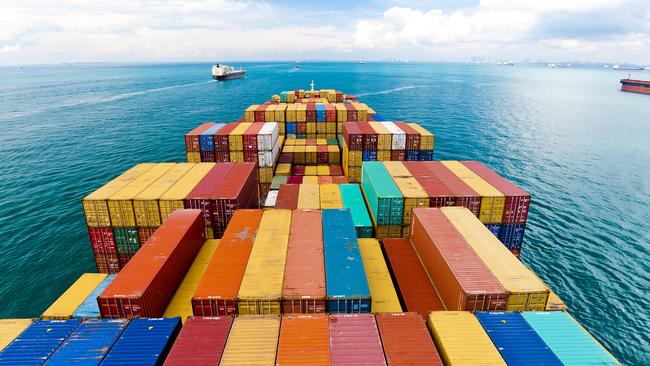
11. INDONESIA
IF AUSTRALIA is to become the deli – rather than the supermarket – of South-East Asia by 2030, a commitment to an Indonesian trade deal is essential.
The Indonesia-Australia Comprehensive Economic Partnership Agreement was signed in March this year, heralding the future of economic relations between the two nations.
Indonesia is experiencing a rapid swell of its middle-class population, with increasing surplus wages and an appetite for protein and grains.
The agreement provides an opportunity for Australia to supply agricultural products – in particular meat and grains – to a rapidly expanding Indonesian population.
Last year Indonesia was worth $17.6 billion in two-way trade, and, according to GrainGrowers chairman Brett Hosking, was Australia’s largest wheat market with annual trade valued at about $1.3 billion.
“The agreement includes a new quota of 500,000 tonnes of Australian feed grain to Indonesia per year … and will create new opportunities for Australian farmers as well as supporting growth and development for Indonesia’s food manufacturing, stock feed and livestock sectors,” Hosking says.
The agreement is yet to be ratified by the Australian Government.
READ MORE: AGJOURNAL
HUGE DEALS DAZZLE AG PROPERTY MARKET
AFRICAN SWINE FEVER THREATENS AUSTRALIAN PORK INDUSTRY
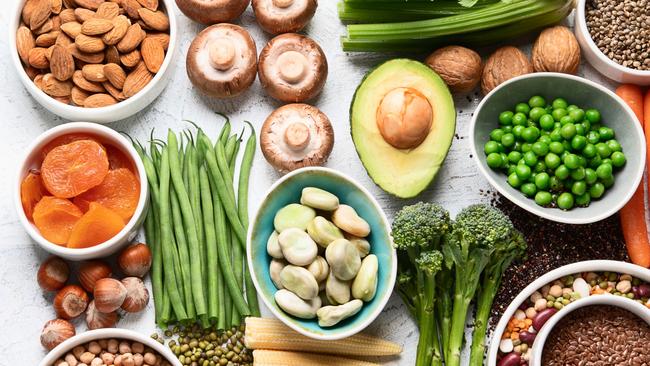
12. PLANT-BASED PROTEIN
PLANT-based protein is already a common sight on supermarket shelves and burger chain menus.
And its popularity is only expected to increase as the population continues to grow and consumers change their habits for ethical, cultural, religious, environmental and dietary reasons.
The CSIRO expects domestic consumption of alternative proteins to reach $4.1 billion by 2030, up from $2.2 billion last year, and it may create an additional $5.4 billion in carbon emission and water savings annually by 2030.
Plant-based protein has evolved to burgers, mince and sausages designed to mimic meat at a sensory level, and, according to Food Frontier chief executive Thomas King, there will be more plant-based meat products on the market that are “near indistinguishable” to conventional meat.
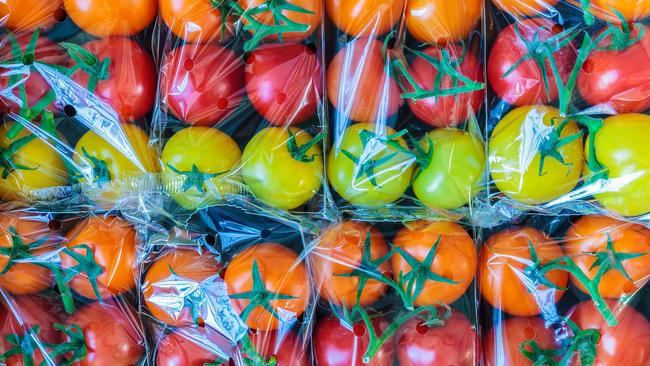
13. PACKAGING
CONSUMERS are increasingly concerned with excess food packaging.
There have been campaigns for supermarkets to stop packaging fruit and vegetables in plastic and there is a growing number of bulk food stores that require consumers to bring their own containers. And the Federal Government has set the ambitious target that 100 per cent of Australian packaging be recyclable, compostable or reusable by 2025.
But this is not a one-way issue.
“Without adequate packaging food can potentially be wasted all the way through the supply chain to the consumer,” says the Australian Institute of Packaging. It’s an issue when Australia produces 7.3 million tonnes of food waste each year.
A recent Australian Fresh Produce Alliance study found packaging increased the shelf life of 10 common fresh food items, leading to less food waste. During the next decade researchers will continue to work on finding alternative packaging.

14. CARBON FARMING
THOSE already carbon farming believe it holds the key to the future.
Carbon farming – simply, farming in a way that reduces greenhouse gas emissions or captures and holds carbon in vegetation and soils – garnered bipartisan political support in 2007.
But the latest International Monetary Fund research shows Australia will fail to meet its Paris Agreement target, to reduce emissions by 26-28 per cent by 2030, with Federal Government figures showing in the 12 months to the end of March, Australia’s greenhouse gas emissions were up 0.6 per cent.
Carbon Farmers of Australia director Louisa Kiely says more people are “catching on” to the importance of soil’s ability to capture carbon and expects that to continue during the next decade.
“We need to feed more people, and in the next decade I think more people will understand the importance of soil and demand governments put soil on the same footing as water,” Kiely says.
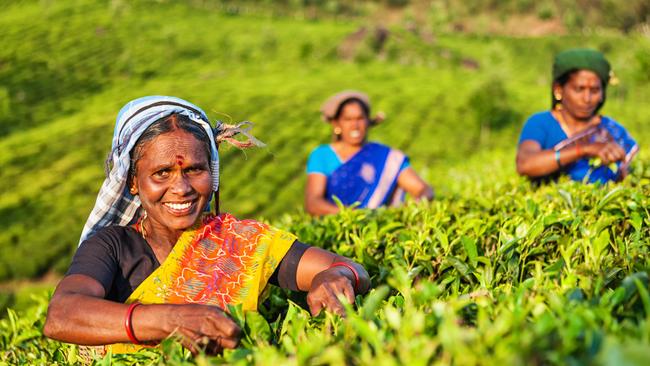
15. INDIA
INDIAN Prime Minister Narendra Modi is prosecuting an ambitious economic reform agenda and is seeking to position India in the top 50 of the World Bank’s ease of doing business index.
More than half of Australia’s lentils and chickpeas are exported to India and, despite recent issues with tariffs imposed by New Delhi, the hunger for pulses is almost certain to grow.
Federation of Indian Associations of Victoria president Sharad Gupta says strengthening ties between India and Australia in the 2010s has set the latter up well for the 2020s.
“There has been a lot more work put into the trade relationship by both India and Australia in recent times and that will continue,” Gupta says.
“Many Australians are already in India, operating businesses, engaging in trade opportunities and the same goes for Indians working in Australia.
“The Indian economy has softened this year – it was running at 7-8 per cent growth and now it’s 5.2 (per cent) but the long-term outlook is very promising.”

16. FAMILY FARM
IN THE heady financial days of the 1980s, the “get big or get out” maxim left little hope for the future of family farming. Yet, heading into the 2020s, the predicted corporatisation of Australian agriculture is far from a reality.
National Farmers’ Federation trade manager Prudence Gordon says family operations still do the heavy lifting nationwide. “Family farms make up 98 per cent of Australian farming businesses,” Gordon says. “Their resilience to this point demonstrates they will long remain a feature of Australian agriculture.”
Yet confidence in the family farming model is not shared abroad. In September, US Agriculture Secretary Sonny Perdue created a stir when he questioned the viability of family dairy operations at the World Dairy Expo in Wisconsin.
“Now what we see, obviously, is economies of scale having happened in America – big get bigger and small go out,” Perdue said. “I don’t think in America we, or any small business, have a guaranteed income or a guaranteed probability of survival.”
Closer to home, federal Agriculture Minister Bridget McKenzie says the Australian and American farm sectors are distinctly different. “Family farms will always be a crucial component of our agricultural sector,” Senator McKenzie says.
READ MORE: AGJOURNAL
BEEF, WOOL, WINE AND GRAIN MARKET TRENDS
IT’S UP TO US TO SUPPORT OUR FARMERS

17. FOOD SECURITY
IT IS difficult in affluent Australia to imagine that a food security crisis looms. But it does.
By 2027 the world will be short 214 trillion calories a year, says Sara Menker, founder and chief executive of Gro Intelligence, an agricultural data technology company.
“In other words, in just a decade we won’t have enough food to feed the planet,” Menker says.
According to the Food and Agriculture Organization of the United Nations, the food shortage is already here. Last year, more than a quarter of the world’s population (two billion people) experienced severe or moderate levels of hunger.
So, how do we get to 2030 without a disaster?
According to the US National Academies of Sciences, Engineering and Medicine, agriculture needs to tackle five areas.
Data, biosensors and advanced analytics must all improve, as well as increase understanding of the role of microbiomes on crop production, feed efficiency and disease resistance to disease.
But it is the academies’ call to make genetic modification of organisms commonplace, to improve food productivity and quality, that will create the most headlines, with GM still not an accepted practice in Europe and even Australia.

18. GLOBAL MIDDLE CLASS
BY NEXT year an estimated 3.2 billion of the world’s 7.7 billion population will be classified as middle class. In a decade, that could rise to be a 5.3 billion-strong middle class, out of a total 8.5 billion global population.
According to the European Commission, by 2030 China and India together will hold 66 per cent of the global middle-class population. These two countries alone will produce 59 per cent of the world’s middle-class consumption.
This middle-class explosion is expected to increase demand for food by 35 per cent by 2030. According to CSIRO, those with middle-class incomes will pay more for trusted, premium food products.
CSIRO says Australia is already experiencing an explosion in demand from China’s middle class, which will account for 45 per cent of the country’s population in a few years.
An Austrade analysis has found most of Australia’s recent growth in food and agribusiness exports has been for premium and value-added products.
Keeping that market over the next decade will require innovation and investment.
19. FARMER AGE
THE average age of the Australian farmer is 57 years. The nation’s median workforce age is 39.
But farm age statistics largely recognise “owners” and it’s believed those running the farms and making the decisions – the age of influence – is almost 20 years younger, while the median age of the agricultural workforce is 49 years. Agricultural workers aged under 35 have also increased, now making up about a quarter of the farming workforce.
The challenge is how the younger generation of farm managers raise the capital to buy the land they are managing.
With $400 billion of investment needed to support farm turnover by 2050, Australian farming will need to embrace new ways of owning and operating farms.

20. $100 BILLION BY 2030
AUSTRALIAN agriculture has set itself a target of being a $100 billion industry by 2030.
Everyone is on board – farmers, government and agribusiness – to lift ag from its current $58 billion of annual production.
Tackling productivity and profitability is the big challenge to get there. The Australian Farm Institute says an annual 3.7 per cent growth rate is required to hit the target. The current growth, of 2.6 per cent, would get the sector to $88 billion by 2030, leaving no room for a business-as-usual approach.
Agriculture is focused on specific issues hampering growth, such as red tape, identifying immediate opportunity areas such as digital technology, and the risks of climate change and high energy costs.
Tackling rising costs will be crucial. Pre-processing energy costs currently make up 9 per cent of the gross value of agricultural production.
On the flip side, adoption of digital agriculture alone could add $20.3 billion to the sector’s value by 2030, with labour savings through automation accounting for a third of that.

